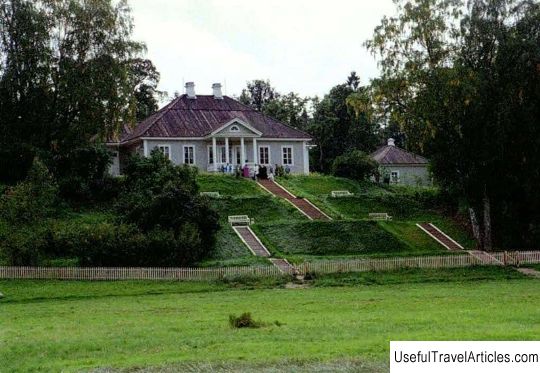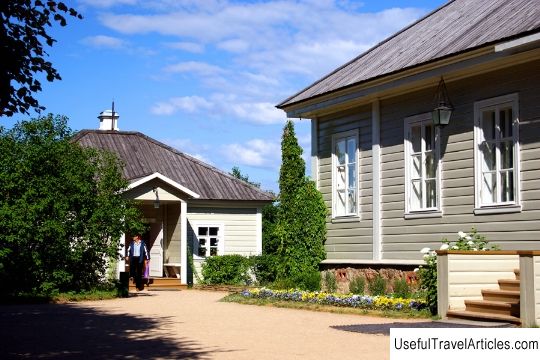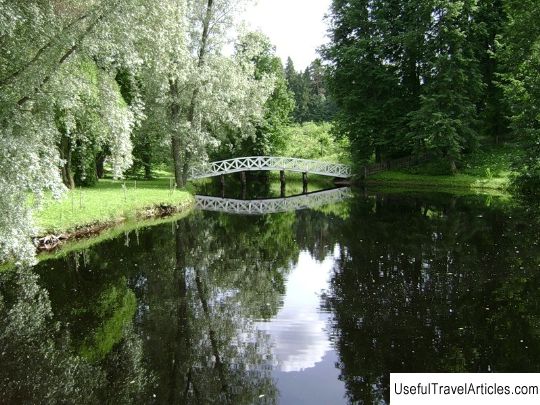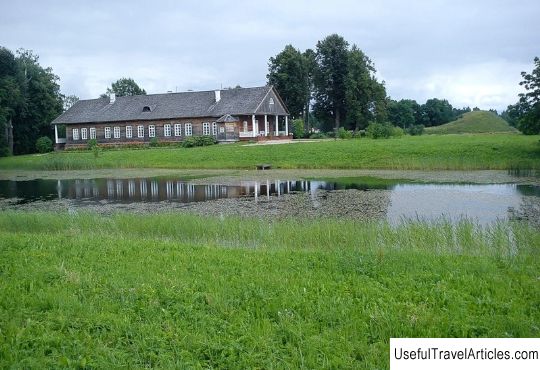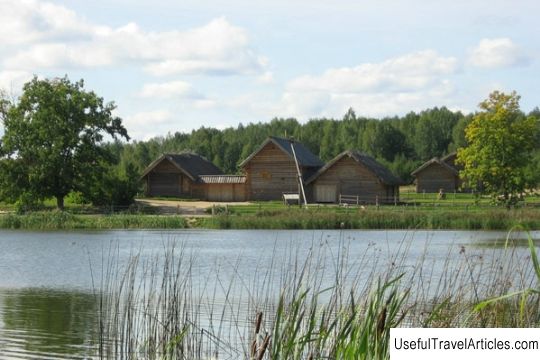House-Museum of A. S. Pushkin in Mikhailovsky description and photo - Russia - North-West: Pushkinskie Gory
Rating: 8,9/10 (690 votes) 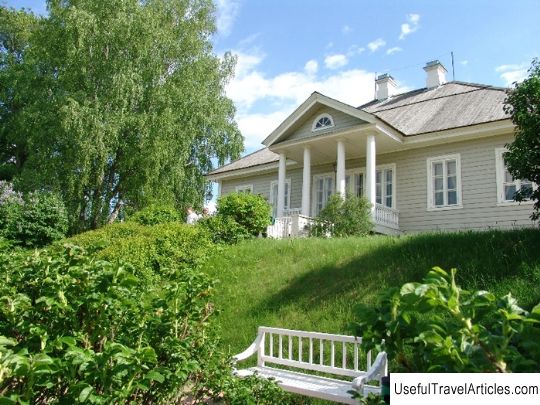
The A.S. Pushkin in Mikhailovsky description and photo - Russia - North-West: Pushkinskie Gory. Detailed information about the attraction. Description, photos and a map showing the nearest significant objects. Photo and descriptionThe family estate of the mother of Alexander Sergeevich Pushkin - the village of Mikhailovskoye - is located in the Pskov province. The estate was established in the 18th century by the poet's grandfather, O.A. Hannibal. Throughout his mature life - from 1817 to 1836. - the poet's life was associated with Mikhailovsky. In Mikhailovsky, about 100 of his works were created, many poems were born here, a large number of poems were written. The Pushkin house is located on the edge of a steep hill. Currently, the house houses a museum, its exposition is devoted to the life and creative activities of the great Russian poet. A tour of the museum begins in the front. The exhibition in the front hall presents the history of the estate. Here you can see the plan of the Hannibal possessions in 1786, lithograph of the village of Mikhailovsky in 1837, autographs and photographs of the poet (in copies). From the front door to the left leads to the nanny's room, to the right - to Pushkin's office. In the nanny's room, under the guidance of Arina Rodionovna, the courtyard girls were engaged in needlework. The room contains antique furniture from Pushkin's time. A shop runs along the wall, on which ancient spinning wheels with tow and spindles are installed in a row. The most significant exhibits are embroideries made by courtyard girls. Next to the nanny's room is the parents' room. The exposition located in this room tells about the poet's being in exile: about the visits of friends, about the circle of his reading and correspondence, about the work on "Boris Godunov", "Gypsies" and other materials. The exhibition presents portraits of parents, brother and sister of A.S. Pushkin. There are also portraits of his friends. There are also portraits of the poet himself (copies). Of particular interest is a rare miniature, placed in a window, depicting Alexander Sergeevich's mother, executed by an unknown author on an ivory plate. The living room, otherwise the sala, adjoins the parents' room. The furnishings of that time have been restored in the living room. On the walls there are sconces, between which there are portraits of the poet's ancestors and relatives. There is a tiled fireplace in the corner. Behind the living room there is a large room that served as the dining room on the poet's family estate. In this room there is a copy of Pushkin's portrait, which was painted by the artist O.A. Kiprensky, as well as the work of an unknown artist of the early 19th century "Pushkin on a wooded hill". The literary exposition tells about his works on the poem "Count Nulin" and other works. It also covers the topic "Pushkin and the Decembrists". A significant piece of coniferous wood is installed on a wooden pedestal. He - from one of the pines, praised by Pushkin in the poem "Once again I visited." In a nearby showcase are billiard balls from Pushkin's billiards, a billiard cue, tableware, as well as a coffee cup and saucer that belonged to the poet's father, and a small samovar from Mikhailovsky. In A.S. Pushkin reproduces the situation that existed here during the life of the creator during the Mikhailovsky exile. The recollections of fellow tribesmen, various documents of Pushkin's time and the poet's correspondence helped to recreate the situation. There are memorial items associated with the memory of A.S. Pushkin: a mahogany writing desk, a bookcase for the poet's son, an armchair from Tver friends, a footstool of A.P. Kern, a silver candlestick with a cap and tongs, an inkwell from the Goncharovs' estate, a poet's cane, a pen stand. Not far from the manor house is a small nanny's house. Inside the house is divided by a corridor into two halves. On the right is the door to the sauna room, on the left - to Arina Rodionovna's light. The only genuine thing of the poet's nanny has come down to us - a wooden box, which apparently served as a piggy bank. To the right of the entrance to the museum is the human kitchen. The kitchen contains household items, as well as kitchen utensils from the 18th - early 20th century. XIX century: rybnitsa for jellied fish, basins in which jam, chops, various pots, ladles, a wooden shovel for bread, etc. were cooked. Next are the house and office of the manager.       We also recommend reading Parthasarathy Temple description and photos - India: Chennai (Madras) Topic: House-Museum of A. S. Pushkin in Mikhailovsky description and photo - Russia - North-West: Pushkinskie Gory. |
